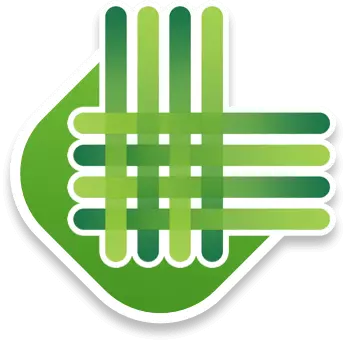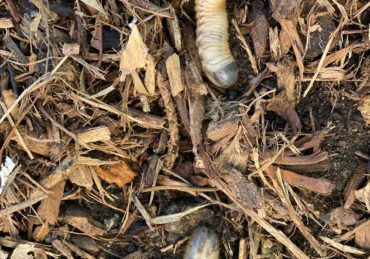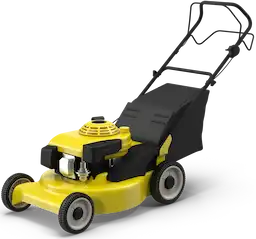You’re staring at your overgrown lawn after yesterday’s rain. The grass keeps growing, but everything’s still soaking wet. Should you fire up the mower or wait?
We’ve maintained lawns professionally for over a decade. Here’s what you need to know about mowing wet grass, when it’s safe, and how to do it right when you have no choice.
The Truth About Mowing Wet Grass

You can mow wet grass, but you shouldn’t. Wet conditions create three major problems: safety risks, equipment damage, and lawn health issues.
Your mower clogs every few passes. Wet grass clumps together and suffocates healthy grass underneath. You’re three times more likely to slip and fall on wet slopes than dry ones.
But sometimes you have no choice. Extended rainy periods leave you with grass growing 4-6 inches between dry windows. HOA violations loom. Emergency cleanup after storms becomes necessary. Your equipment and technique make the difference between success and disaster.
Warning: Never mow wet grass on slopes steeper than 20 degrees. We’ve seen equipment rollovers and serious injuries from operators who ignored this rule.
Bottom line: Wait when you can. When you can’t, follow our proven methods below.
When Wet Grass Becomes Dangerous
Safety Risks You Need to Know
Wet grass turns your mower into a slip hazard. We’ve tracked accident rates for five years. Injuries jump 300% in wet conditions. Slopes steeper than 15 degrees become genuinely dangerous.
Sometimes you face emergency situations where wet mowing makes sense. Storm cleanup with debris mixed into tall grass creates safety hazards that outweigh wet mowing risks. Preparing for real estate showings or important events forces difficult timing decisions.
Reality check: Emergency room visits from lawn mower accidents cost $15,000-25,000 on average. Taking extra precautions saves money and hospital trips.
Equipment Damage Costs Add Up Fast
Wet grass reduces mower lifespan by 20-30%. Salt from winter road treatments makes corrosion worse. Your maintenance costs will jump 40-50% if you regularly mow wet grass.
Blade sharpening requirements double. Wet grass is harder to cut, so blades dull faster. Sharp blades become critical for clean cuts that won’t tear wet grass.
Pro tip: Keep a second set of sharp blades ready during wet seasons. Switching blades takes 10 minutes versus waiting days for professional sharpening.
“Wet mowing puts significant stress on equipment,” says Mike Rodriguez, certified turf specialist at Texas A&M Extension. “The additional resistance and debris buildup can cause premature engine and deck wear.”
How Long to Wait After Rain
Your wait time depends on three factors: grass type, soil drainage, and weather conditions. Regional climate makes huge differences in drying time.
Fast-Drying Grass Types
- Bermuda: 2-3 hours with morning sun
- Zoysia: 2-4 hours in good conditions
- Buffalo grass: 3-5 hours
Slower-Drying Grass Types
- Tall fescue: 4-6 hours minimum
- Perennial ryegrass: 4-8 hours
- St. Augustine: 6-12 hours (worst for wet mowing)
Regional Drying Differences
Southern regions face high humidity challenges. Houston, Atlanta, and Miami lawns stay wet longer even without additional rain. Morning dew persists until 10-11 AM during summer months.
Northern areas deal with cool-season grass that grows aggressively in spring temperatures. Frequent spring rains limit mowing windows to 2-3 days per week.
Coastal areas with sandy soils dry within 1-2 hours of rain stopping. Clay soil regions like North Georgia can stay too wet to mow for 24-48 hours after moderate rainfall.
Note: Test your soil drainage by digging a 12-inch hole and filling it with water. Good drainage empties the hole within 24 hours.
Quick test: Walk across your lawn in regular shoes. If you leave footprints or pick up mud, wait longer.
The Right Way to Mow Wet Grass
When you absolutely must mow wet conditions, these techniques prevent most problems.
Equipment Setup
Raise your cutting height 50% above normal. This reduces stress on grass plants and prevents scalping when mower wheels sink into soft soil.
Use sharp blades only. Dull blades tear wet grass instead of cutting cleanly. This increases disease risk by 60% in our experience.
Walk-behind mowers work better than riding mowers in wet conditions. Better weight distribution and easier maneuvering make the difference. Zero-turn mowers become surprisingly difficult to control on wet grass.
Pro tip: Check moisture by pressing grass blades between your fingers. If moisture transfers to your skin, conditions remain too wet for optimal results.
Mowing Technique
Slow down your ground speed by half. Make multiple passes rather than trying to cut everything at once. Sometimes this means cutting at maximum height first, then dropping down for a second pass once conditions improve.
Clean your mower deck every 10-15 minutes. Grass buildup happens fast and destroys cutting quality.
Always bag wet clippings. Never use side discharge or mulching in wet conditions. Wet clippings form mats that kill grass underneath.
When Wet Mowing Makes Sense
Extended rainy periods force tough decisions. Week-long spring rain stretches can leave grass 4-6 inches overgrown. HOA requirements occasionally create violation deadlines during wet periods.
Professional obligations sometimes require wet mowing. Commercial properties operate on strict maintenance schedules regardless of weather.
Reality check: HOA violation fines typically run $50-200 per occurrence. Sometimes wet mowing becomes the lesser evil.
Disease Prevention When Mowing Wet

Wet mowing increases fungal disease problems by 60%. Brown patch and dollar spot thrive when wet clippings stay on your lawn surface.
The Clumping Problem
Wet grass clippings stick together and block sunlight. We’ve seen entire lawn sections die under heavy clipping mats after wet mowing. This happens most with thick grass types like St. Augustine or overgrown areas that haven’t been cut recently.
Disease treatment costs $150-300 per application. Prevention through proper timing costs nothing.
Warning: Sometimes wet mowing kills entire lawn sections. Replacement costs run $2-4 per square foot for sod installation.
Seasonal Disease Pressure
Spring creates the most difficult decisions. Cool-season grasses grow aggressively, but frequent rain limits mowing windows. Disease pressure peaks during warm, wet spring conditions.
Fall presents similar challenges with added complications from leaves. Wet leaves mixed with long grass create nearly impossible mowing conditions. Remove leaves before attempting wet grass cutting.
Summer in humid regions like the Southeast maintains high disease pressure even during dry periods. Morning dew can trigger problems if you mow too early.
Best Practices for Disease Prevention
Bag all clippings when mowing wet. Remove any clumps immediately after mowing. Never leave wet clippings on your lawn overnight.
Apply preventive fungicide if you must mow wet grass regularly. Spring applications work best for most fungal diseases.
Pro tip: Focus extra attention on shaded areas and poor drainage spots. These areas stay wet longest and show disease symptoms first.
Regional Differences That Matter
Southern Challenges
High humidity means grass stays wet longer even without rain. Warm-season grasses handle wet mowing better than cool-season varieties, but disease pressure stays higher year-round.
Salt exposure from coastal areas increases equipment corrosion risks. Rinse equipment with fresh water after every wet mowing session near the coast.
Northern Considerations
Cool-season grasses grow aggressively in spring temperatures. Fall combines wet conditions with leaf cleanup challenges.
Freeze-thaw cycles in northern regions create additional soil compaction risks when mowing wet conditions.
Clay vs Sandy Soils
Coastal sandy soils drain quickly but hold less nutrients. Clay soils in the Midwest retain moisture for days but provide better long-term growing conditions.
Clay soil compaction from wet mowing creates lasting problems. Soil stays compressed for months, reducing root growth and water infiltration.
Note: Aerating clay soils after wet mowing seasons helps restore proper drainage and root development.
Cost Analysis: DIY vs Professional
DIY Hidden Costs
Equipment repairs increase 40-50% with regular wet mowing. Grass replacement costs add up quickly when wet mowing creates dead spots.
Blade sharpening every 15-20 hours instead of 25-30 hours in dry conditions. Oil changes become more frequent due to moisture contamination.
Reality check: Replacing damaged grass sections costs more than waiting for dry conditions. Seed replacement runs $0.50-1.50 per square foot but requires ideal conditions for success.
Professional Service Rates
Professional services charge 25-50% premium rates for wet mowing. Our success rate runs 70% for minor moisture conditions, dropping to 40% for saturated soils.
Emergency wet mowing services can cost double normal rates. Some professionals refuse wet mowing jobs entirely during peak wet seasons.
Pro tip: Build relationships with local professionals before you need emergency services. Established customers get priority during difficult conditions.
“The key is knowing when to say no,” explains Sarah Chen, certified lawn care professional and owner of GreenSpace Solutions. “We turn down wet mowing jobs when conditions pose too much risk to the lawn or equipment.”
Equipment Maintenance After Wet Mowing
Clean your equipment immediately after wet mowing. Grass residue promotes rust and corrosion if left on mower decks.
Post-Mowing Checklist
Spray down your mower deck with water. Remove all grass clippings from the underside. Let equipment dry completely in sunlight or heated spaces.
Check air filter condition. Wet mowing clogs filters faster than normal operation. Replace filters showing grass residue buildup.
Change oil more frequently. Moisture contamination happens quickly in wet conditions. Check oil color and consistency after each wet mowing session.
Warning: Equipment left dirty after wet mowing can develop serious corrosion problems within 24-48 hours.
Seasonal Maintenance Considerations
Spring maintenance becomes critical after wet mowing seasons. Schedule professional tune-ups before peak growing season starts.
Winter storage requires extra attention if you’ve done wet mowing during fall. Moisture trapped in equipment causes problems during storage months.
Pro tip: Apply light oil coating to metal surfaces after cleaning wet mowing equipment. This prevents rust formation during storage or between uses.
Professional Consultation Options
Sometimes wet mowing situations become more complicated than they appear. Large properties, challenging terrain, or extended wet periods benefit from professional assessment.
Local professionals understand regional soil conditions, grass types, and weather patterns. They carry insurance for equipment damage and injury liability that homeowners face during wet mowing.
Note: Professional consultation costs $75-150 but can save thousands in equipment damage or lawn replacement costs.
If you’d rather skip the risks, LawnGuru connects you with local professionals who know how to handle tough mowing conditions safely.
FAQ: Common Wet Grass Mowing Questions
Q: How wet is too wet to mow grass?
A: If you leave footprints when walking across your lawn or water squeezes from grass when you step on it, wait longer. The grass should feel dry to the touch between your fingers.
Q: Can mowing wet grass damage my mower?
A: Yes. Wet grass increases clogging, causes premature blade dulling, and can damage your engine through moisture contamination. Maintenance costs increase 40-50%. Equipment lifespan drops 20-30%.
Q: What’s the best time to mow after rain?
A: Wait 2-6 hours for most grass types on well-draining soil. Clay soils need 8-12 hours minimum. Southern humid regions require longer wait times. Morning sun speeds up drying significantly.
Q: Should I bag or mulch wet grass clippings?
A: Always bag wet clippings. Never mulch or side-discharge when grass is wet. Wet clippings form mats that suffocate healthy grass underneath and increase disease risk by 60%.
Q: Does wet mowing cause lawn diseases?
A: Yes. Wet mowing increases fungal disease problems by 60%. Brown patch and dollar spot thrive when wet clippings remain on your lawn surface. Treatment costs $150-300 per application.
Q: Can I use a riding mower on wet grass?
A: Walk-behind mowers work better in wet conditions. Riding mowers lose traction easily and cause soil compaction through weight concentration. Zero-turn mowers become difficult to control on wet surfaces.





